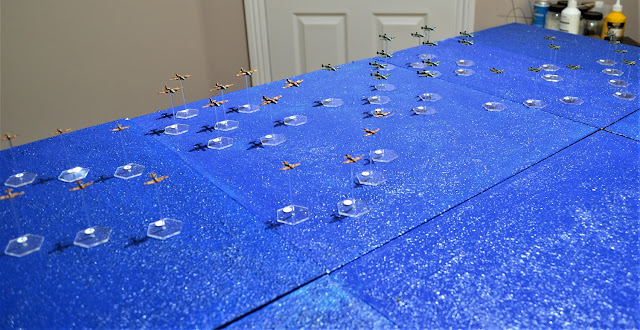With 2018 coming to a close it is time to review my wargaming over this past year.
I will away from 20th December so all wargaming will cease for a couple of weeks with normal service resuming on my return on 6th January.
In looking back at my 2018 plans, it is best described as indiscipline on my part! It started well then went completely astray when I painted a 1/1200 scale warship purely as a break from painting figures, only to find myself being sucked into naval wargaming! It did provide an excuse for restarting Operation Nostalgia which included air wargaming. A first for me!
In looking back over the past year I will refer back to my original plans and examine what has been achieved and what has not. Under each of the three headings, 'Battles', 'Campaigns' and 'Painting', I will add what I have completed but not planned for originally.
This is the first full year of my blog and I have to say it is useful in keeping your mind focused on the various projects. Normally I meander through all manner of stuff including part starting projects that often barely get off the ground. A bad idea if you want to avoid amassing unused lead piles!
On to the review. The text in Italics is taken directly from my original 'Plans 2018' posting -
In looking back over the past year I will refer back to my original plans and examine what has been achieved and what has not. Under each of the three headings, 'Battles', 'Campaigns' and 'Painting', I will add what I have completed but not planned for originally.
This is the first full year of my blog and I have to say it is useful in keeping your mind focused on the various projects. Normally I meander through all manner of stuff including part starting projects that often barely get off the ground. A bad idea if you want to avoid amassing unused lead piles!
On to the review. The text in Italics is taken directly from my original 'Plans 2018' posting -

















































